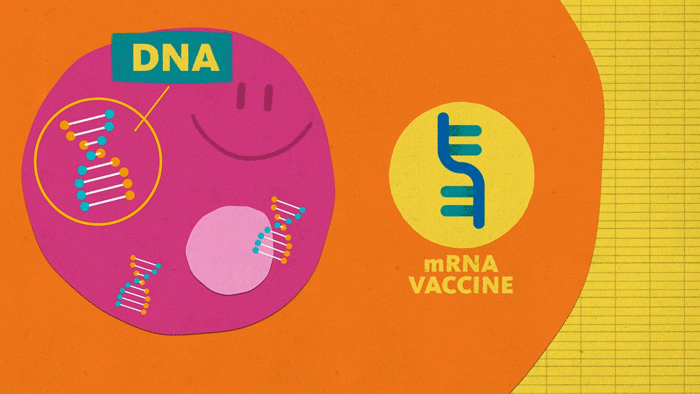Yes, the COVID vaccine came out super-quickly—but here's why it's safe

Remember when the pandemic started and some people were really into baking bread?
Lots of people embraced the comfort of sourdough to get them through the frightening first months of the pandemic. Ironically, the reason we can eat bread at all is because thousands of years ago a virus helped us develop a new enzyme that made it easier to digest carbohydrates.
Viruses have developed hand-in-hand with humankind, sometimes—as we've seen with COVID-19—to deadly effect. Humans have fought back, developing in the process the concept of vaccines, with the first effective, modern vaccine coming on the scene more than 200 years ago.
Today's COVID-19 vaccines work in much the same way as those early inoculations but are safer and more effective. It's true that they were developed with historic speed—but only because they were built on decades of basic research that allowed us to deliver them in record time.
What's really changing your DNA—viruses
One of the myths floating around the internet is that COVID-19 vaccines change your DNA. As the sourdough bread example illustrates, it's actually viruses that do that, not vaccines.
In fact, viruses can infect, and change, anything living: animals, plants, bacteria and even other viruses.
Think of them as an instruction manual. Sitting on a table, for example, outside of a living being, a virus does nothing—it's inert and harmless. But once it enters our nose and lungs, it uses our own living cells to put its instructions into motion.
"One cell can make a million copies of a virus," says Luis Villarreal, UC Irvine professor emeritus and co-founder of The Center for Virus Research. In the case of COVID-19, the virus takes hold inside a respiratory cell, where it makes millions and millions of copies of itself, before moving on to replicate in other cells in our body.
What happens next? Either the virus keeps going until it runs out of cells to infect or the body figures out how to stop it. Vaccines help your body recognize a virus invader and defend against it.
The way this vaccine works is not new
There are different types of vaccines, but they all have the same purpose.
The first one ever created was for smallpox. A doctor realized that people who got a milder but similar virus called cowpox seemed to be immune to smallpox.
By fighting off cowpox, the body had learned to recognize smallpox and produce antibodies to ward it off. This is fundamentally how vaccines function today. Teaching the body to fight smallpox, however, required injecting cow scabs into humans, and risking real illness.
Modern vaccines, fortunately, make significant improvements upon that. We don't have to get sick with a virus to gain immunity—or inject ourselves with cow scabs.
What is new about the COVID vaccine
Although traditional vaccines have taken years to develop, scientists have harnessed a much faster method for the COVID vaccine.
The technique, used to create both the Moderna and Pfizer vaccines, uses mRNA—or messenger RNA—to make harmless versions of the spike proteins found on the COVID-19 virus. In earlier vaccines, scientists had to make those proteins in a lab and then transfer them into the vaccine.
With mRNA, our body produces the proteins—a vastly quicker and more efficient process. It does this so well because our body already knows how to make mRNA (and does all the time). mRNA is like a blank piece of paper that our cell nucleus encodes instructions into in order to make proteins that control bodily processes, like hormones. Our cell nucleus then "mails" the mRNA it's encoded out into the rest of the body. This process happens inside us every moment of the day.
Since the mRNA in the vaccine is not produced by the cell nucleus, where DNA is kept, it never affects our genome in any way. It just joins the stream of other mRNA being sent through our body to produce proteins and regulate our bodies.
That's vastly preferable to letting COVID-19, or any other virus, work its way through our cells.
How the vaccine developed so quickly
With vaccine production vastly sped up by using mRNA as a delivery mechanism, scientists were able to quickly move to clinical and human trials—allowing the COVID vaccines to become the fastest ever developed and approved.
What the public didn't see was that this remarkable achievement represents years of global research, including advances from fighting SARS and decades of basic science to better understand mRNA by innovators like Katalin Karikó, among many others, who helped put us on this path. (You can learn more about the work of Karikó and other innovators here).
This technology, and its successful large-scale debut, means that we could, potentially, have scientists assessing the risk of emerging viruses and preparing vaccines before they become a global scourge.
Prevention, control and treatment during pandemics will always be important. But it's nice to know that the next time there's a threat, we have the tools to move fast to save lives and reduce the catastrophic effects of another global pandemic.




















